Well-adjusted Christen Press aims to leave her mark on star-laden USWNT

In college, Christen Press was constantly under the spotlight. Despite being Stanford’s all-time leading scorer and playing a major role for the Women's Professional Soccer's magicJack franchise in her first year as a professional, she just wanted to get away.
“I went to Europe and decided to sort of change the direction of my career and change my playing style because what I was doing wasn’t working,” Press told SI.com in a phone interview from Kansas City, where the U.S. national team begins its qualification campaign for the 2015 Women's World Cup on Wednesday. “I was playing in front of the national team for four years in college and my first year [as a pro], and I never got a look.”
Press scored 71 goals and assisted 41 others in her four years at Stanford. In her 2010 senior season, she scored 26 and won the Hermann Trophy as college soccer’s top player.
That didn’t translate into immediate success professionally, as she only put away eight for the magicJack in the final season of WPS. It took a move abroad, to Göteborg FC in the Swedish Damallsvenskan, to change her perspective and turn her into a ruthless forward once again.
“I was in front of the goal so much at Stanford,” she said. “I still amassed a lot of goals, but there were so many opportunities that I wasn’t scoring. Obviously, at the higher level, you’re never going to get 11 great chances in a game.”
• BIRD: Ellis looks to build USWNT continuity in World Cup qualifying
Sweden marked a change in emphasis from the physical side of the game, where Press always dominated in college, to the technical and tactical aspects of playing center forward. Rather than worrying about the self-imposed pressure she put on herself, she learned to relax and enjoy the cerebral aspects of football.
“I felt like winning and succeeding and making the national team were the only things that mattered [in college],” she said. “I sort of went to a small town in Sweden where nobody would ever see me play, I thought.”
She was wrong.
Press’ first match was a 3-1 loss to Arsenal in the Champions League in March 2012, and her first call-up to the senior national team came a month later. She joined the U.S. for its pre-Olympic camp in Florida in the waning months of Swedish coach Pia Sundhage’s tenure as manager.
The FIFA window only required Göteborg release her for six days, but Press made the Olympic squad as an alternate anyway. Her inexperience and the caliber of the other forwards — Alex Morgan, Abby Wambach and Sydney Leroux — kept her off the final roster, but Press regained her motivation after her first call-up.
“From there, I kind of haven’t looked back with the national team,” she said. “I’ve been called into almost every camp. I’m just trying to progress and fight for a consistent spot on this team and kind of a bigger role on the field.”
She scored 22 goals in all competitions for Göteborg in 2012, including one in the Swedish Cup final defeat of Damallsvenskan champion Tyresö. Eventually, she broke into the team and started scoring goals with the U.S. as well.
In her first cap in February 2013, Press scored twice from an unfamiliar position on the right wing. Four days later, she came off the bench at center forward and scored again against the same Scotland team.
Press credits her new mindset for her success as a latecomer to the national team. As every professional athlete does, she fights a constant mental battle against herself, but she has a different perspective on it as a psychology and communications double-major in college.
Not only does she understand her internal dialogue better than most, but she also articulates it well.
“I kind of dropped all of that pressure, dropped that kind of tenseness that I had on the field — that I had to be perfect, I had to score, I couldn’t choke — and that thought that was kind of creeping in my head. It just quieted when I was in Gothenburg, and I was able to be independent,” she said. “I was able to live on my own in a new country, be any person I wanted to, be whatever player I wanted to be. As soon as I had that comfort on the field and that freedom, I started to convert a lot more of my chances, and I actually re-found my love for the game. I stopped thinking about everything being goal-oriented, everything being about competition. It was also something bigger than that, just loving the sport, enjoying yourself, finding yourself. When I was able to better live in the moment that I was in, I think that it really freed me.”
Press took that freedom on board and allowed it to make her a better player. She refined her technique and raised her soccer IQ to play on the wing instead of just in the middle. Morgan, Leroux and Wambach still have the central positions locked down, but Press has become a starter on the right flank.
New U.S. coach Jill Ellis said Press’ adaptability has left the biggest impression on her.
“I think her quality — she’s very special. I think she’s done very well since I’ve first taken over. My impression of her is, she’s a player that has great flexibility,” Ellis said in a conference call with reporters last week. “I’ve been very pleased with her willingness to play now as a wide player, embrace that, and also working really hard to get her in the box. When balls are coming down on the other side, we’ve certainly told her we want her to get in the 18.”
That’s fine with Press, who is still most comfortable in front of goal. For now, she understands she won’t be able to unseat the others who play center forward.
She’s learning to play away from the center of the field and the center of attention, which is where she was at Stanford and for long periods of her time in Sweden.
“I think that it has been a challenge at times, and there’s obviously a huge upside to playing with players that are at the top of the game on the international level,” Press said. “It’s been challenging, and actually before Jill came in, under Tom [Sermanni], I definitely had that feeling that I was stuck. How could I be different? How could I break free? … I’ve actually kind of started to feel like I’ve been able to grow into my role on this team.”
GALLERY: Players to Watch in CONCACAF WWCQs
CONCACAF Women’s World Cup Qualifying Players to Watch
F Abby Wambach, USA
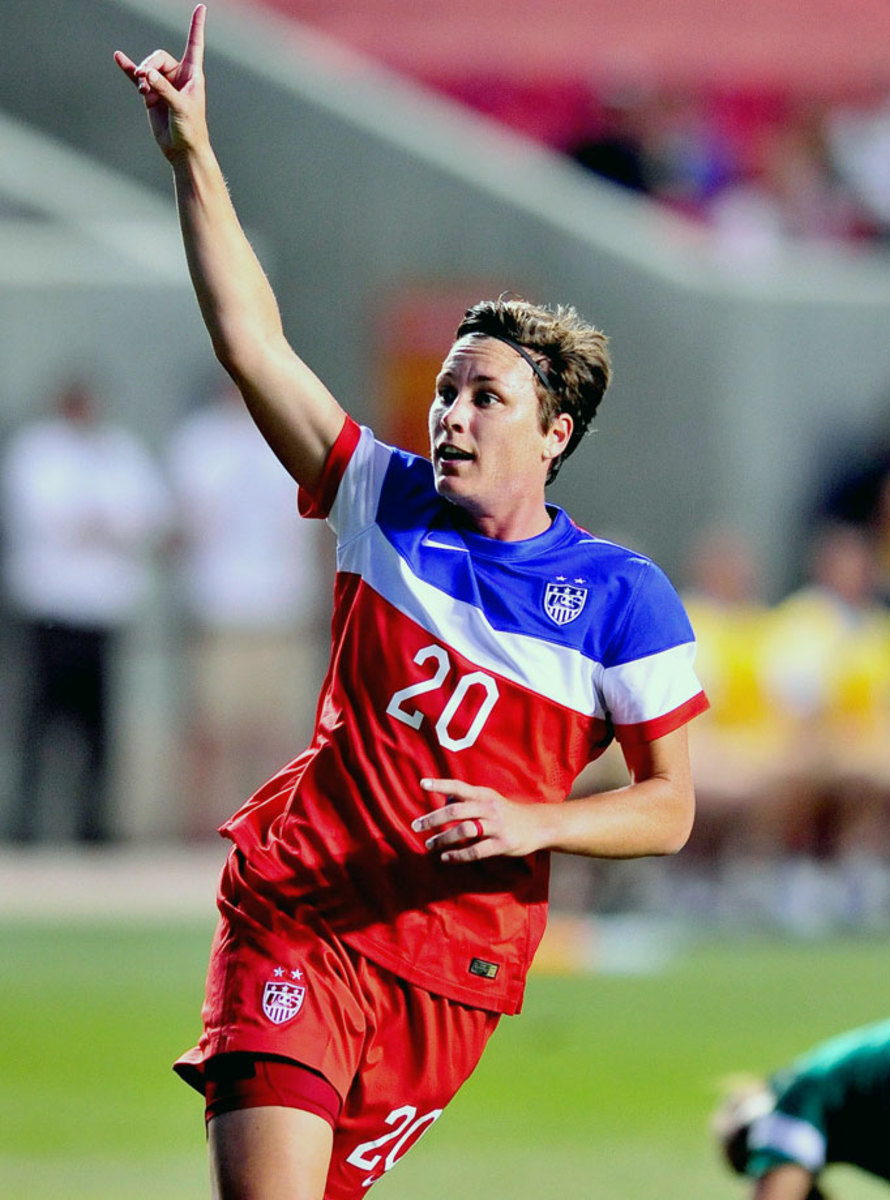
A hard-nosed center forward, Wambach has recently embraced playing a role deeper in midfield for the United States, but don’t expect to see the 2012 FIFA World Player of the Year stray too far away from her favorite spot on the field: in front of goal.
F Sydney Leroux, USA
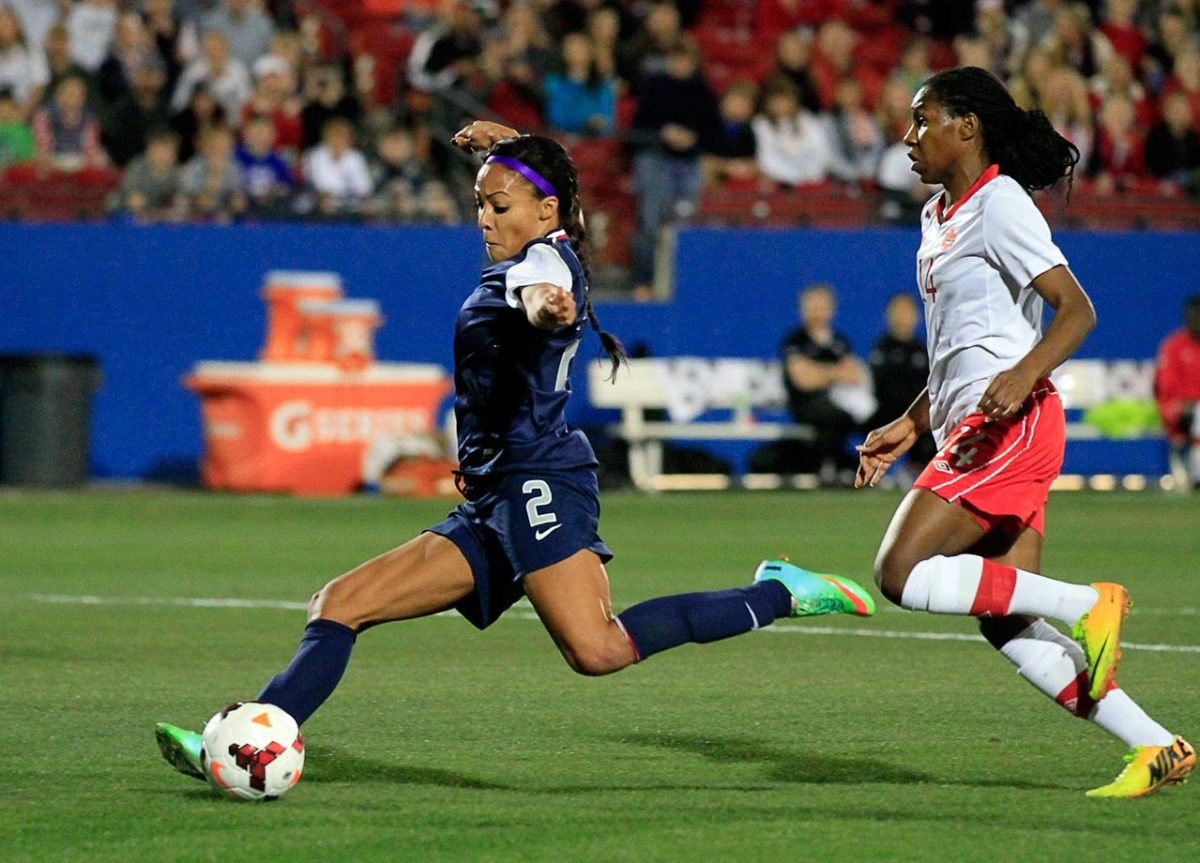
Leroux enjoyed a stellar breakout onto the international scene with 14 goals in 2012, including a five-goal game in her hometown of Vancouver, B.C., against group-stage opponent Guatemala. She also scored four goals in one game in 2013 against Mexico, the U.S.’s biggest threat in these qualifiers.
F Alex Morgan, USA
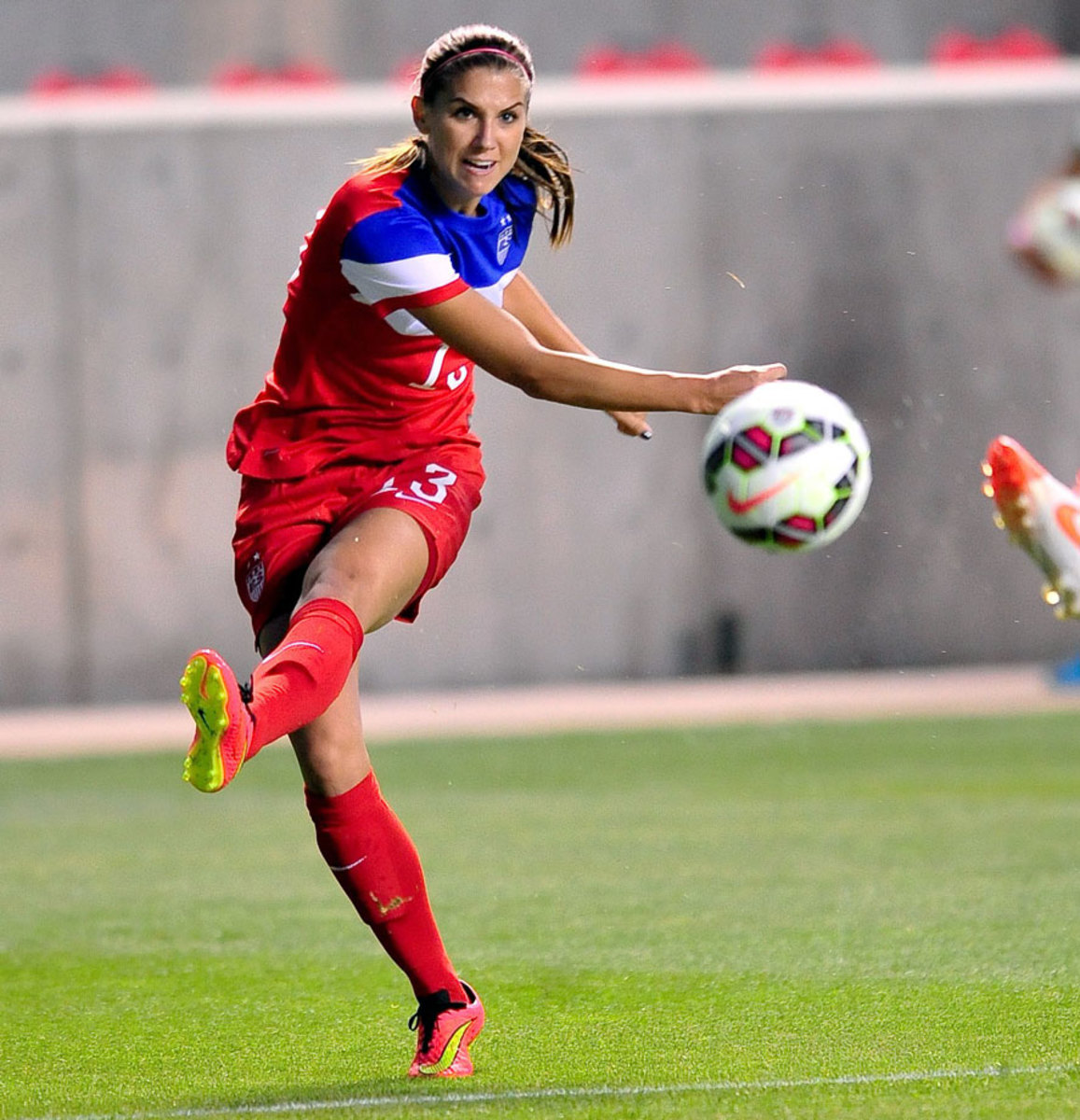
Despite an injury-addled 2014 season, Morgan remains the face of the American team and one of its biggest threats in attack. It took her over a year to start scoring again for the U.S. after an ankle injury that took a long time to heal, but she scored three goals against Mexico in the team’s most recent tune-up matches before qualifiers.
M Carli Lloyd, USA
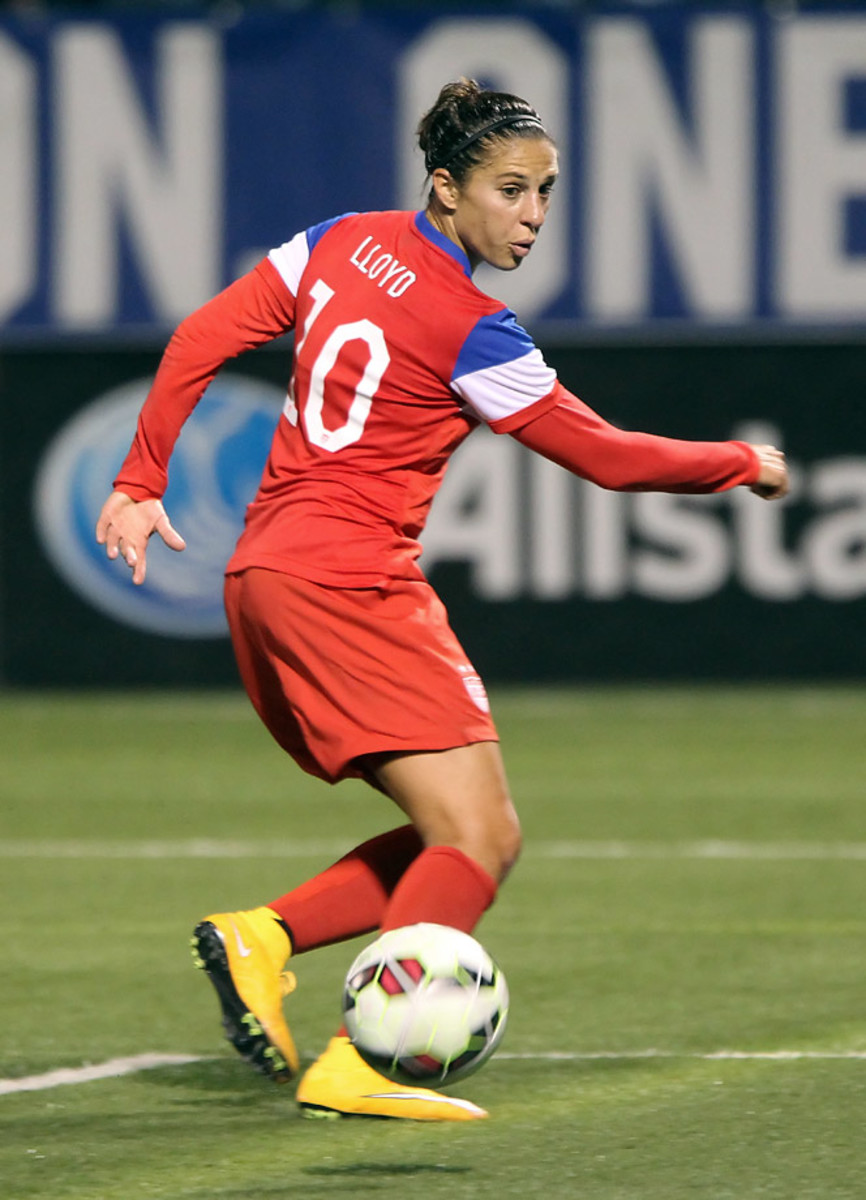
She doesn’t have the name-brand recognition of the other U.S. stars on this list, but Lloyd is still one of the team’s most consistent players and an important cog in midfield. She’s the only player, male or female, to score the gold medal-winning goal in two separate Olympics, as she did in 2008 and 2012, when she scored both in a 2-1 win over Japan.
GK Hope Solo, USA
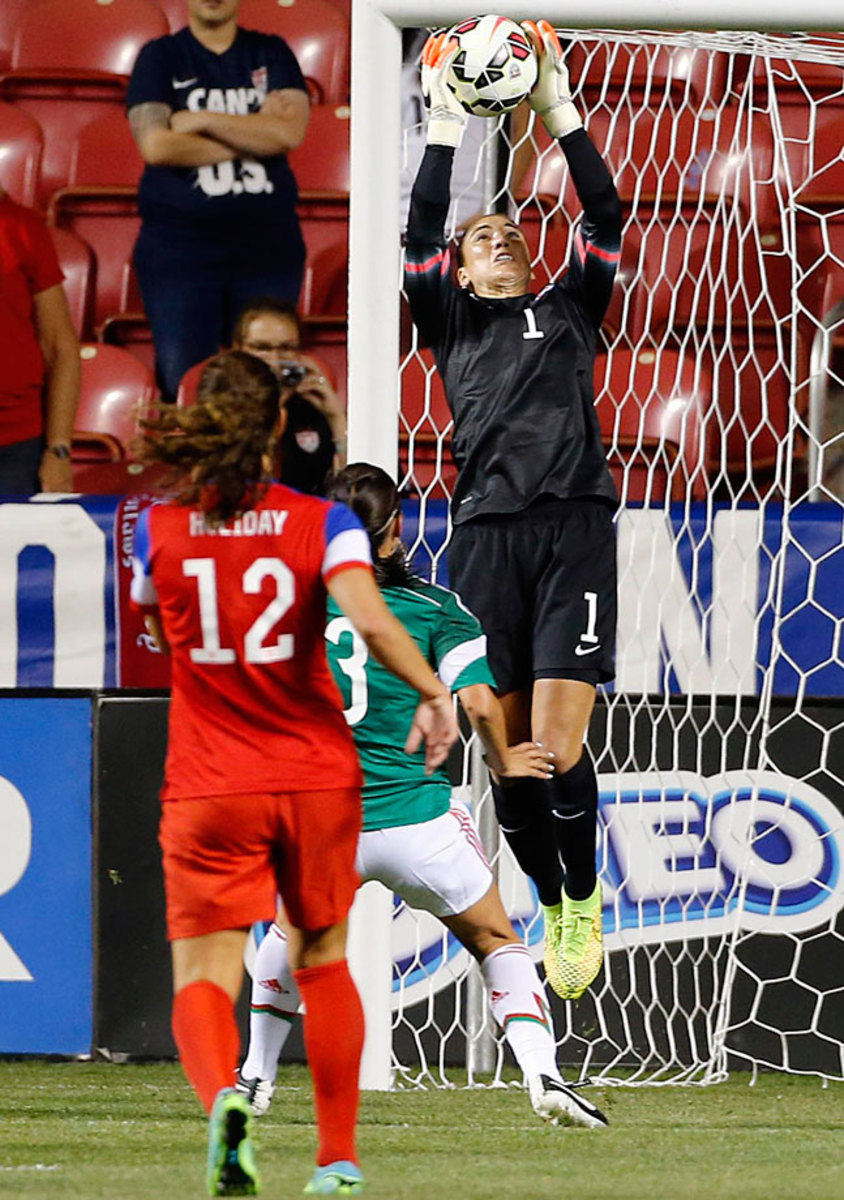
Despite her recent legal troubles and the attention that has come with it — she’s currently awaiting trial for domestic violence — Solo continues to play well for her country. She set the U.S. record for career shutouts with her 72nd in a friendly against Mexico in September.
D Alina Garciamendez, Mexico
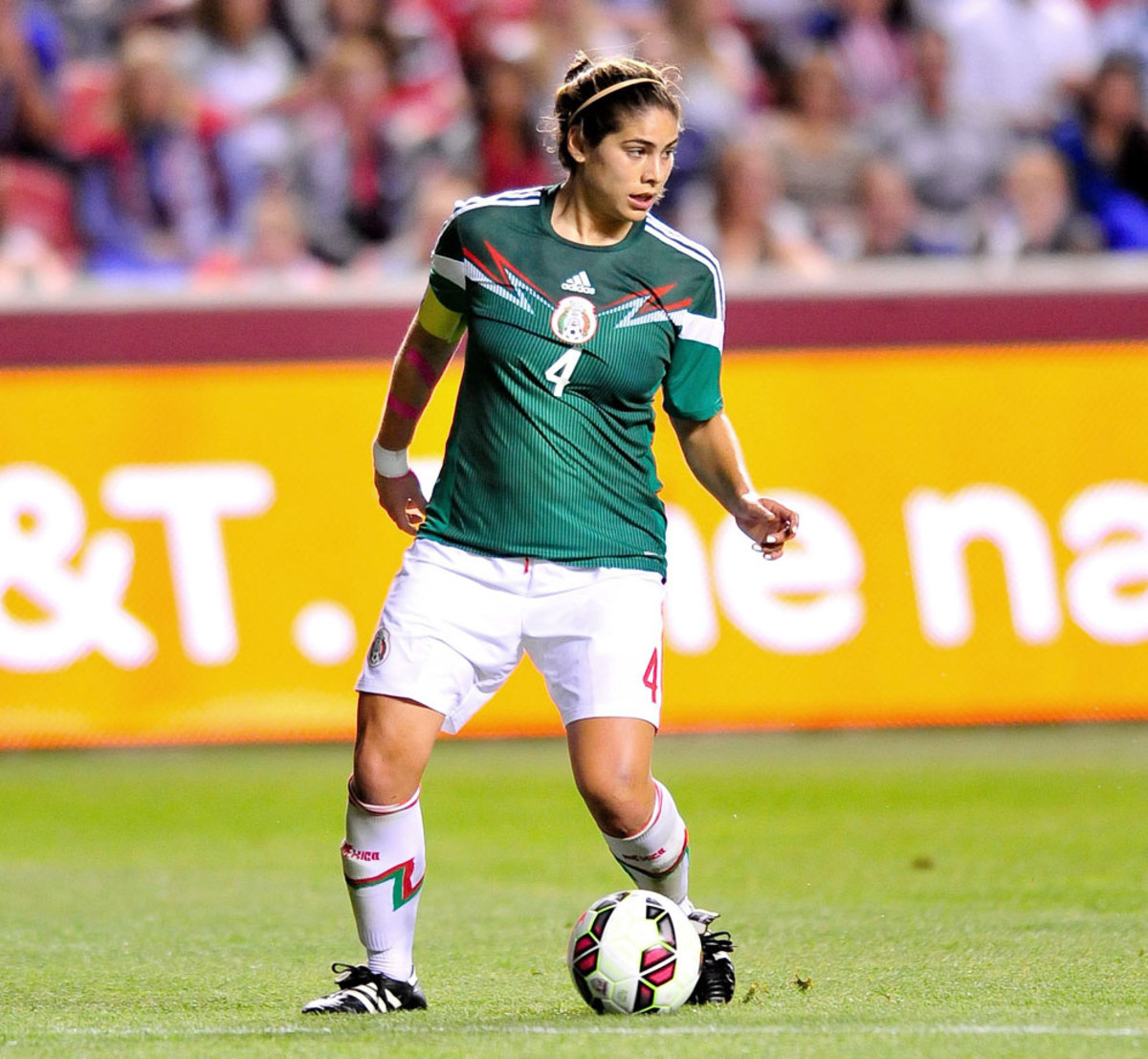
After starting for Mexico as a Stanford player at the 2011 World Cup, Garciamendez opted to go abroad for her rookie professional season in 2013 rather than joining the National Women’s Soccer League. The Texas-born defender signed with FFC Frankfurt in the Frauen Bundesliga.
M Teresa Noyola, Mexico
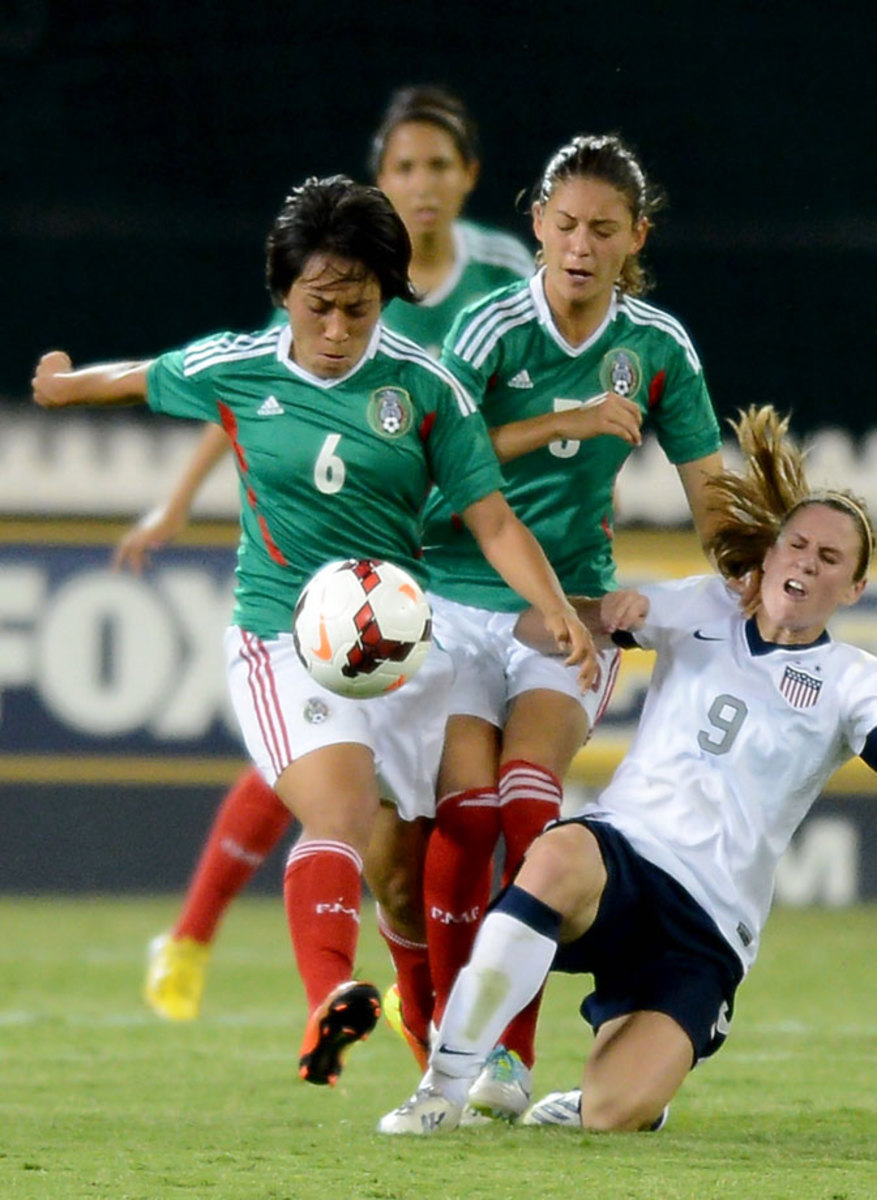
Noyola won the Hermann Trophy as college soccer’s top player in 2011, when she played for Stanford. As a youth player, she represented the U.S. from the under-14 to under-20 level before joining Mexico in 2010, in time to play for El Tri in the 2011 World Cup.
GK Cecilia Santiago, Mexico
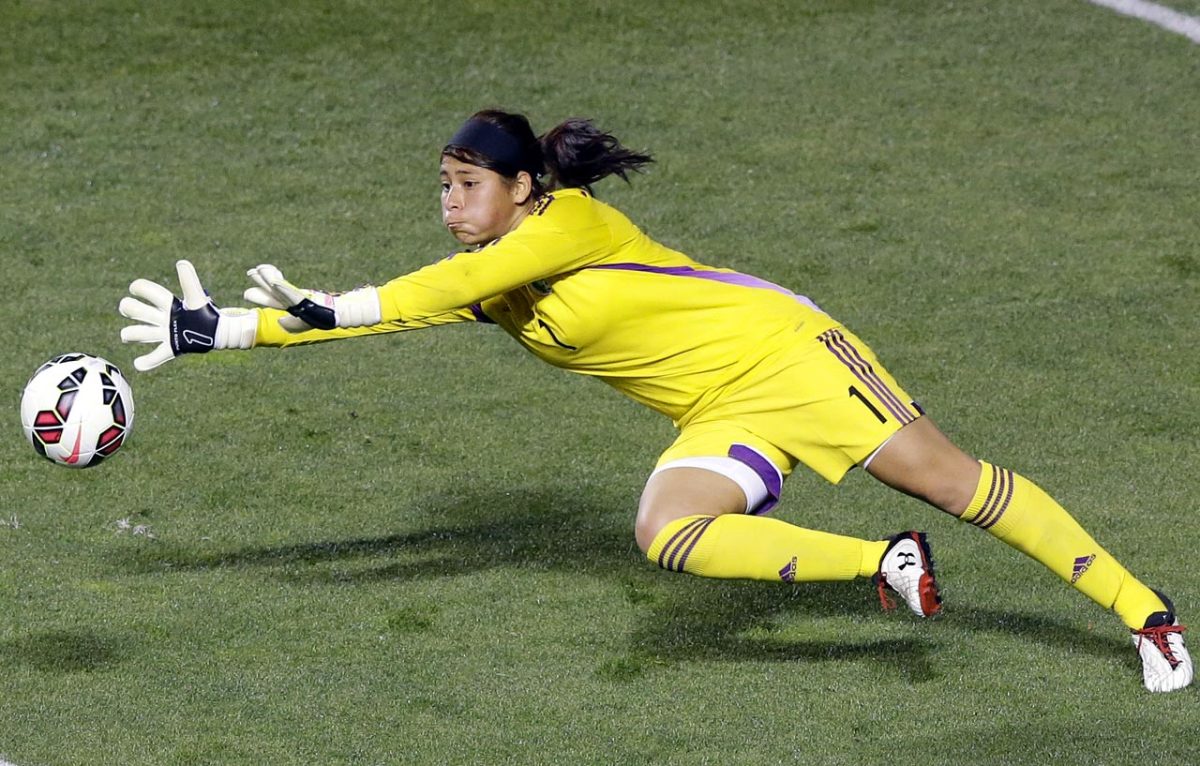
Santiago made the World Cup roster for Mexico at age 16 in 2011, and she’s the youngest goalkeeper of either gender to play in a World Cup. Being the youngest player has become familiar territory for her, as she had just turned 14 at the 2008 Under-20 World Cup, and she played an important role in Mexico’s advancement to the quarterfinals in the 2010 edition of the same tournament.
F Daphne Herrera, Costa Rica
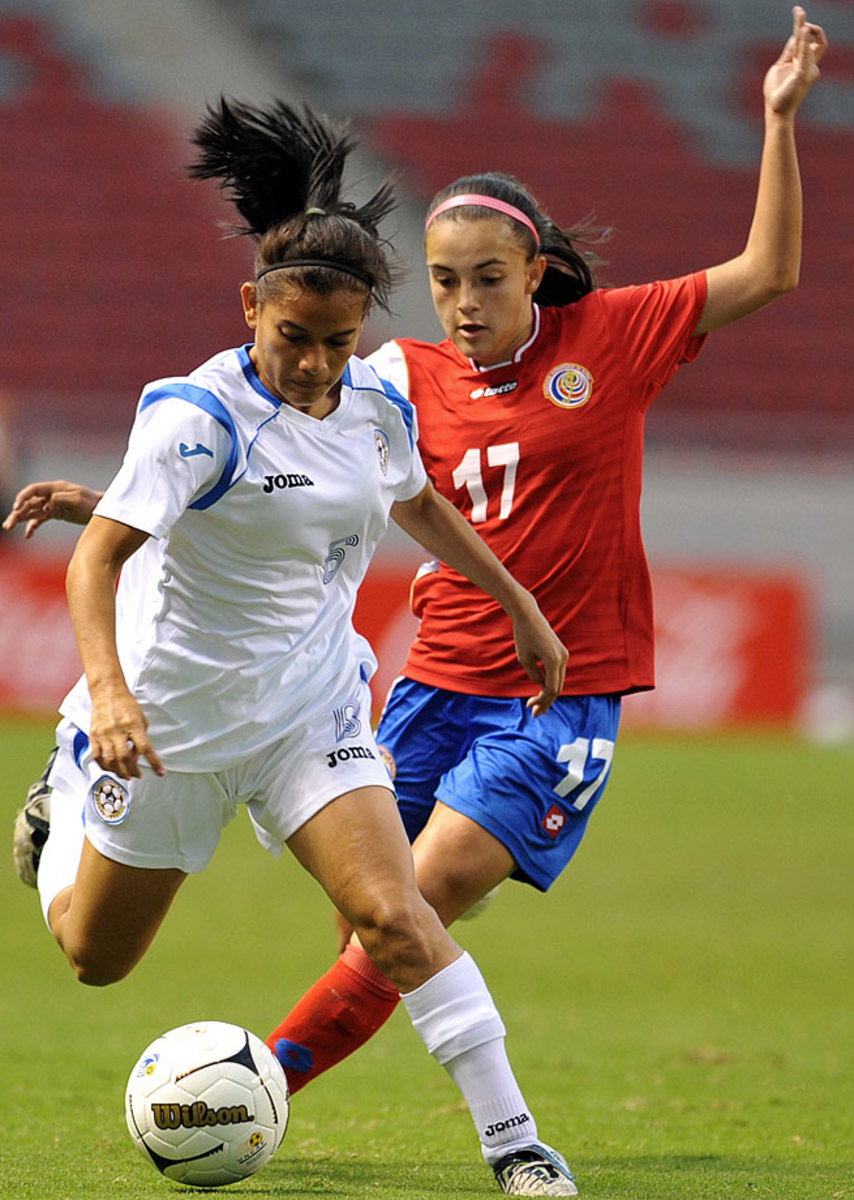
Two months after playing for Costa Rica in the Under-20 World Cup, 18-year-old Herrera (right) will be with the senior team as it attempts to qualify for its first World Cup. Costa Rica only scored two goals at the tournament, and Herrera scored the first, in a 5-1 loss to France in the opening group game.
MF Shirley Cruz, Costa Rica
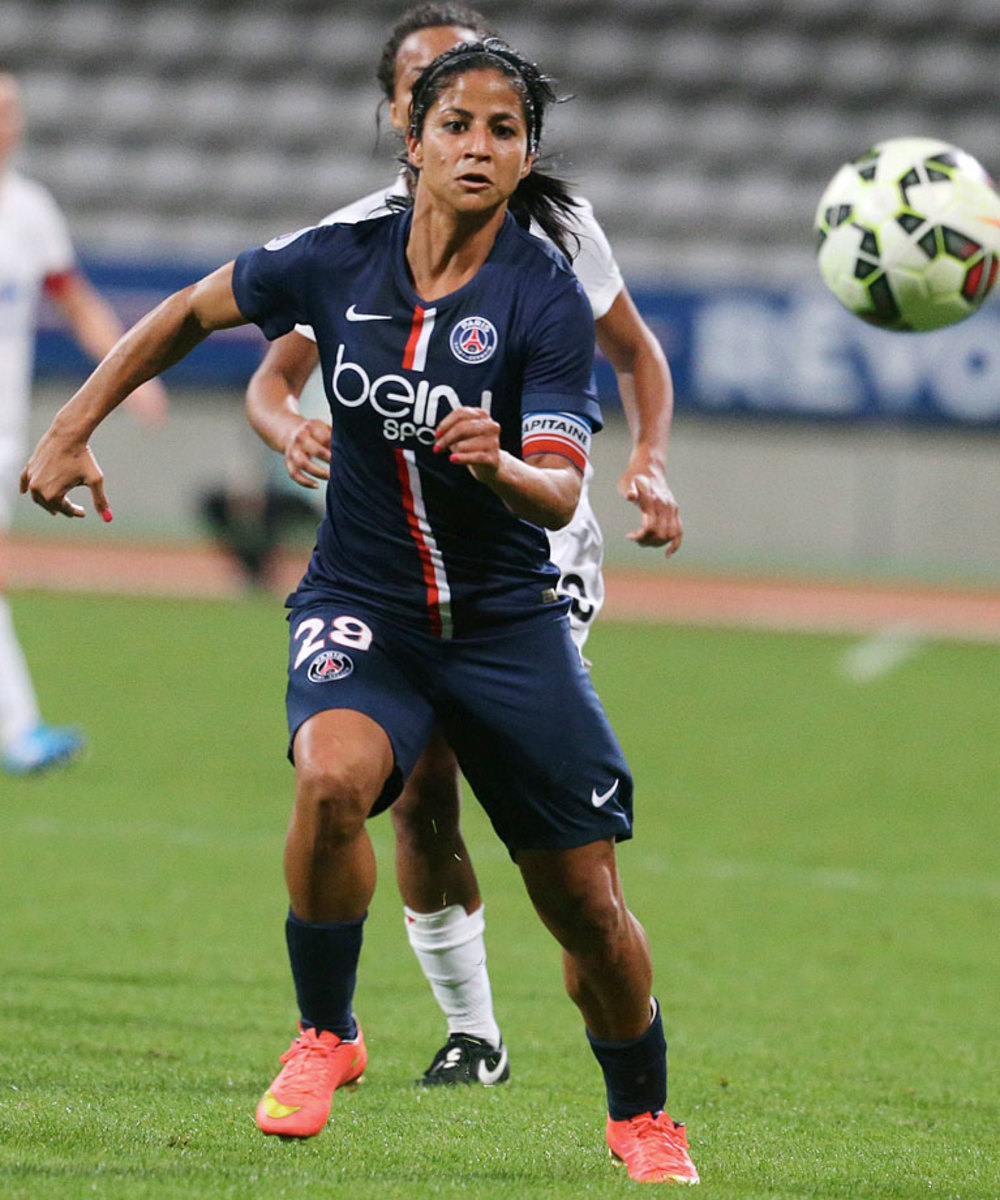
Cruz has spent her entire professional career in France’s Ligue 1 Féminine, first at Lyon from 2006 to 2012 before moving to Paris Saint-Germain. She has won two UEFA Champions League titles, two French Cups and six Ligue 1 titles, as well as scoring 18 goals in 29 caps for the Ticos.
D Alicia Wilson, Jamaica
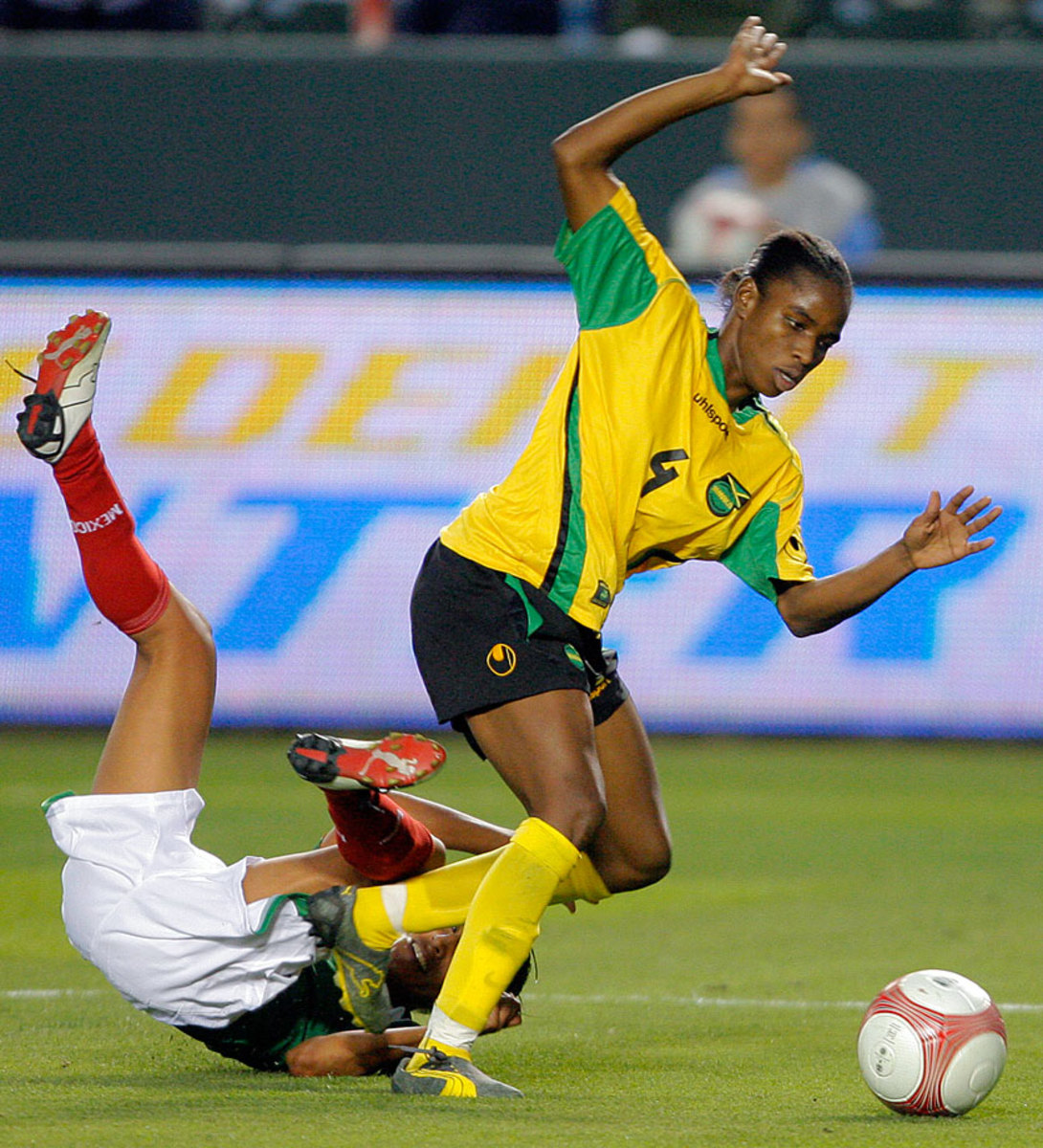
Jamaica’s captain is an assistant coach at University of West Florida, where she rejoined the coaching staff last year after playing professionally in Iceland and Costa Rica. The 35-year-old quit playing for the national team after its failed World Cup bid in 2006, but she returned to play in the Caribbean Cup in June and will lead her country out this month again.
F Shakira Duncan, Jamaica
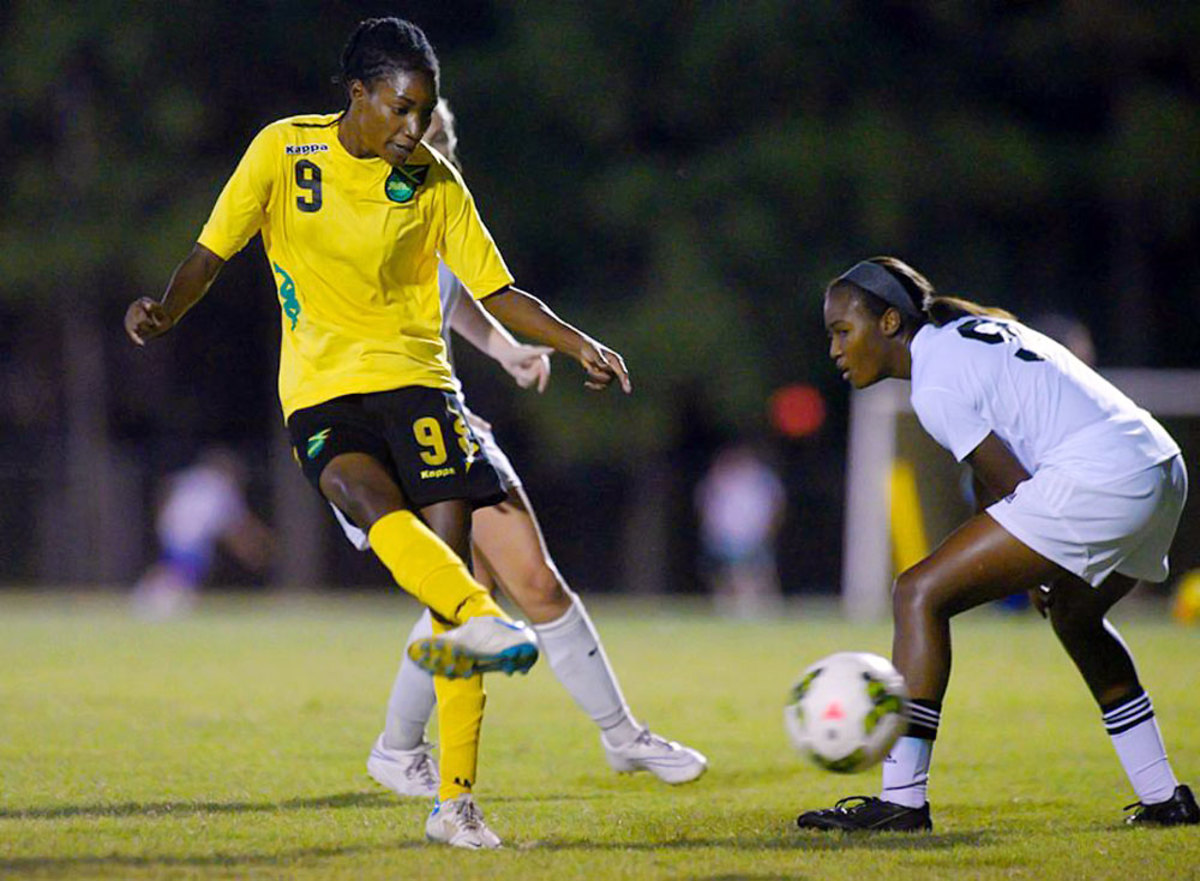
Another West Florida connection on the Jamaican squad and the team’s go-to goalscorer, Duncan played for the Argos after transferring from Darton State College. She was the Ron Lenz National Player of the Year both seasons after scoring a program-record 33 goals and 13 assists in 2009, following up with another 31 goals and 12 assists in 2010.
D Daniela Andrade, Guatemala
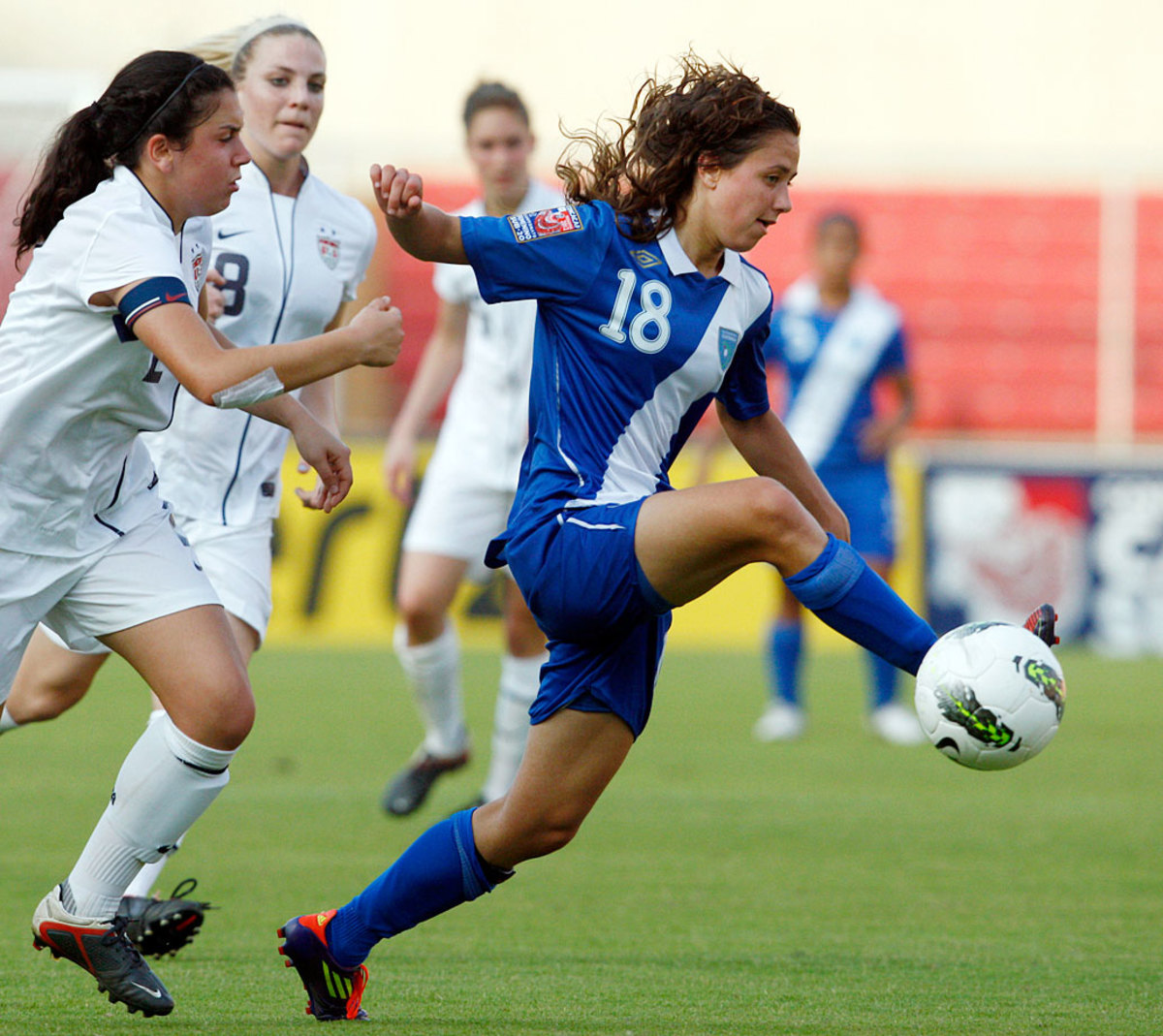
Andrade is a senior at University of South Florida, where she plays as an outside back. She’s been an important part of the Bulls team since her sophomore year, but she has been a part of the senior national set-up for even longer, since Guatemala’s last World Cup qualifying campaign, when it lost to the U.S. 9-0 in the group stage.
F Maria Monterroso, Guatemala
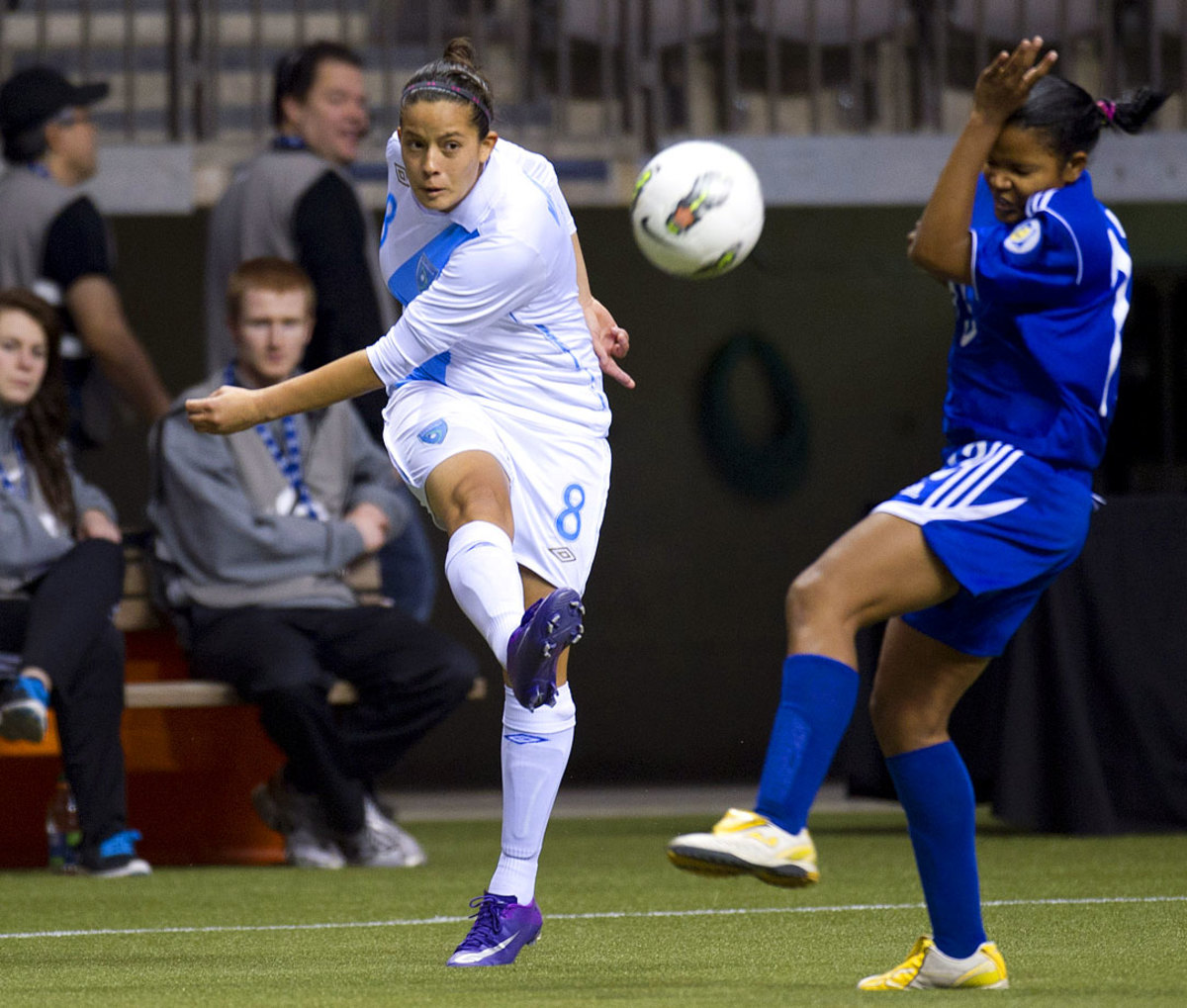
Another collegiate player, Monterroso plays college ball for Grand Canyon University in Phoenix. She is the Antelopes’ leading scorer this year with six goals, following up on a 20-goal 2012 freshman season at Lyon College in the NAIA.
F Kennya Cordner, Trinidad & Tobago
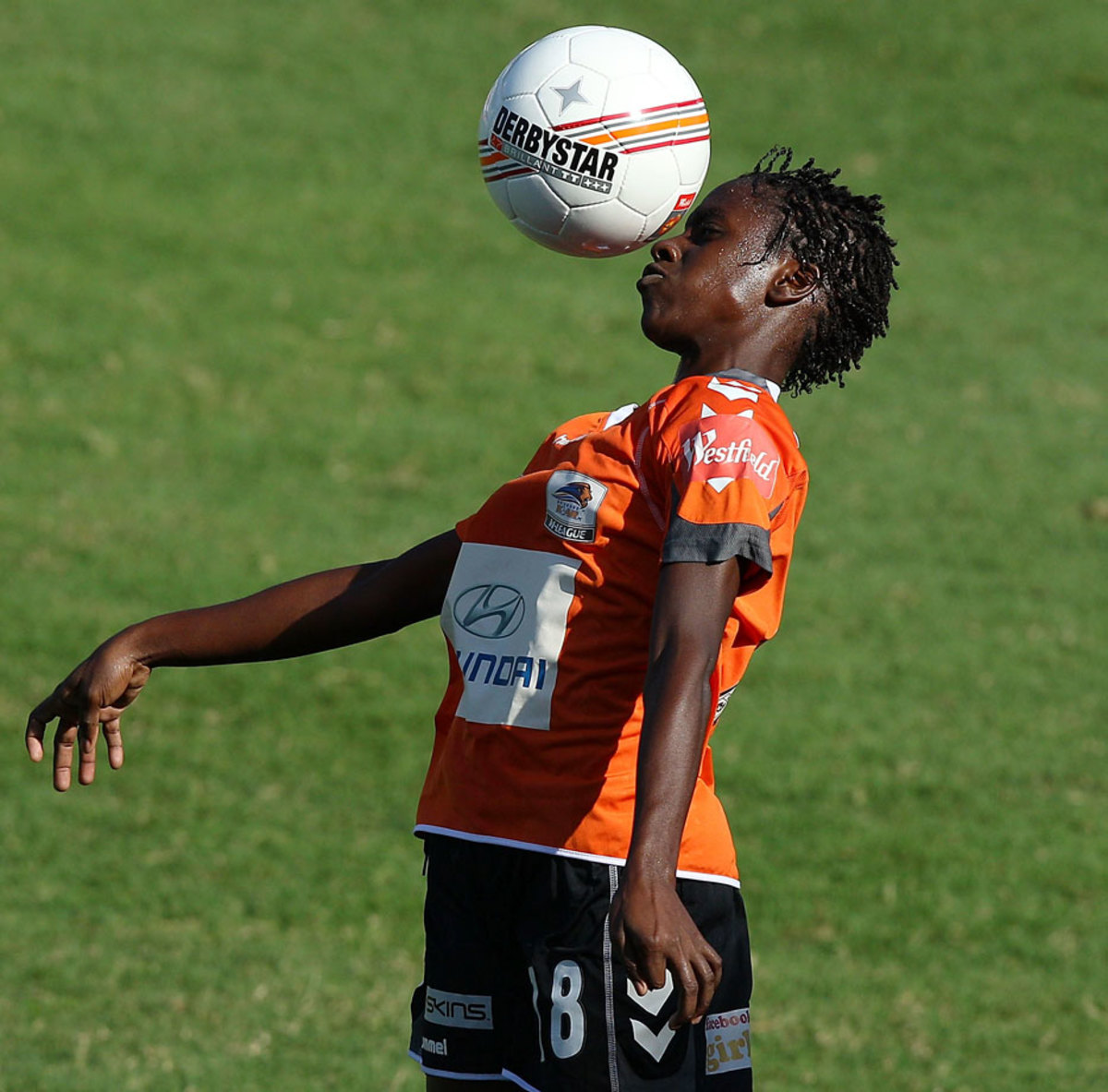
Cordner briefly joined the Seattle Reign during the 2013 NWSL season, when Seattle desperately needed a goalscorer, and Cordner had scored four goals in three appearances for the Reign Reserves. In 2014, she played for the Seattle Sounders Women and led the team with eight goals in just seven appearances.
F Ahkeela Mollon, Trinidad & Tobago
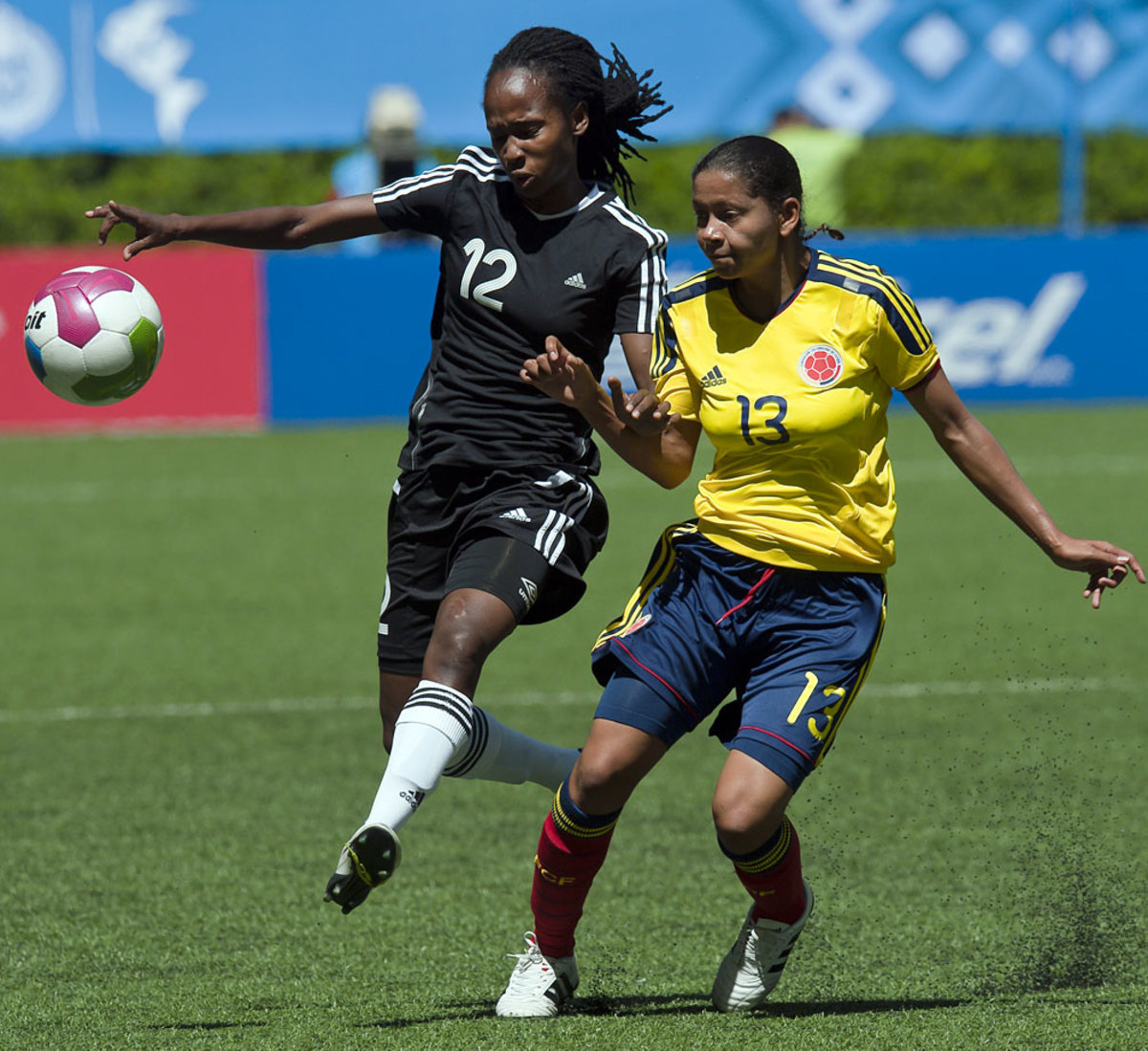
Mollon has played most of her professional career in northern Europe, floating between Iceland and Sweden. She will miss Kvarnsveden’s final match of the season due to national-team commitments, but her team can finish no higher than third, which is one spot short of promotion to Sweden’s top league, the Damallsvenskan.
Two years after crossing the Atlantic Ocean, making her mark at Göteborg and transferring to the Tyresö team she helped beat in the Swedish Cup final, Press stared at the newspaper one morning. She never learned Swedish fluently during her time in the country, but one word stood out above the others in the headlines.
"Bankrutt is the only word I recognize as I scan Aftonbladet, a larger Swedish daily newspaper, reporting headline news. My club team Tyresö declared bankruptcy and was folding only two days before our Champions League Quarterfinal. We step off the field after our best training session of the season when the Twitter notifications begin to buzz on our phones. I look frantically around the locker room trying to understand, but the Swedish mixed with panic confuses me. I knew the club was meeting with the Swedish federal government that day, but I thought it was at 15:00. I check the clock: 11:30. The only thing clear is that the energy that sprung from a post-practice high has quickly depleted. Everyone is as confused and scared as I am."
The description of her panic at seeing Tyresö’s bankruptcy printed in one of the country’s biggest papers is one of many moments preserved in Press’ blog. When she moved to Europe, she started writing as a way to keep family and friends informed of her new life, but it also offers insight into her psyche and the life of a professional footballer.
The usual topics are all there — travel, injuries, the frigid winter weather in Sweden — but so are the uncomfortable subjects, such as Tyresö’s bankruptcy.
“I wanted to be honest — I think that was the most important thing — and I didn’t want to shy away from harder topics,” she said. “The deeper and deeper we got into it with my situation with Tyresö … the issues got more real and less about just the things I was discovering walking down the streets in my city. I think that it actually kind of pushed me as a writer to be able to talk honestly about a controversial topic.”
Club officials failed to submit paperwork for a review of its finances, leading the Swedish federation to withdraw its top-division license beyond the 2014 season. Tyresö began cutting costs wherever possible, which made traveling around Europe more difficult.
Still, the team blazed through the Champions League, winning four two-leg knockout series by a combined 19-3 score to make the final against German powerhouse Wolfsburg before losing, 4-3. Press starred along the way as her team’s leading scorer, with nine goals in nine matches.
During an exodus of Tyresö’s top professionals after its bankruptcy, Press signed with the National Women’s Soccer League. She joined the Chicago Red Stars in May, directly after the Champions League final.
Again, she had to go through the adjustment of moving to a league with a different style, playing in an athletically dominated league after excelling in Sweden’s lower-paced, tactical atmosphere. This time, she has a new perspective and appreciation for the game around the world.
She also has the adaptability built through adjusting to new playing situations multiple times over the past two years.
“It’s a completely different game, and you can see how quick the other countries are developing with their focus on football and getting touches on the ball and being true football players, and I think that perspective is why I changed my game so much, and I started to value other things and see the little nuances in the game that give you such a big advantage,” Press said.
“I think in the U.S., we have such a focus on the physicality, on being the best athlete, that it sort of overshadows the football aspect of it. Being in Europe and playing in those leagues and in the Champions League, you get to see how each country has a unique style, and these players are just fantastic with the ball; the ball’s just glued to their foot, and they don’t have to worry about taking a first touch or any of the technical aspects because they already have that in their arsenal. They can work on the specific nuances and tactics so much more than we can when controlling the ball is a lot more difficult, and our first touch is secondary to being fast and strong.”
• MORE: Wambach, Morgan headline USWNT World Cup qualifying roster
Press said NWSL’s overall style reflects that dichotomy.
“The tactics in NWSL are so chaotic. It’s so about physicality. It’s both teams attacking with nine players, and it’s just so open on the transitions, really fast-paced to the point of being out of control,” she said. “The Damallsvenskan is a little extreme on the other side: it’s so under control, there are 20 passes strung before you even go forward.”
Press said the U.S. national team staff understands that other countries are catching up to the athletic American squad. That’s part of the reason Tyresö’s previous manager, Tony Gustavsson, was on the short list of possible hires after Sermanni’s firing.
Instead, Ellis got the head job, and Gustavsson became her assistant. Press said he brings familiarity and trust that has allowed her and the rest of the team more confidence in its transition toward better alignment with global footballing standards.
“It’s definitely in the forefront of our agenda to transition into a game that’s more fluid, that’s more dynamic, that requires players to have a higher technical and tactical competency,” she said. “It’s always difficult to make those changes and to make that progression when you’re still winning, when the old way is still successful enough because in order to make a change, you sometimes have to take a couple steps backward before you go forward. I think we’re in that transition time where we’re kind of moving gingerly.”
The next test in the U.S.’s ability to move forward is its quest to qualify for the World Cup in Canada. Four years ago, the U.S. lost in the semifinal to Mexico and had to play an intercontinental playoff against Italy to advance. That embarrassing moment perfectly reflected the changing realities of the women’s game worldwide.
U.S. women dominate Mexico in last tune-up before World Cup qualifying
This time around should be even easier than the last one was supposed to be, with Canada not even participating in the CONCACAF Championship kicking off Wednesday in the U.S. because of the host nation’s automatic qualification spot. The U.S.’s biggest rival will be Mexico, which it defeated by a combined 12-0 score in two friendlies five days apart last month.
The U.S.’s group includes Trinidad and Tobago, Guatemala and Haiti. The Americans just have to earn third place in the tournament to qualify.
Press will likely start on the right again for the U.S., in a position that she had never played as recently as two years ago. A lot of being a player at the international level is dealing with the unknown. Coping with on- and off-field stressors is a common demarcator of top players.
Despite still living in a seemingly black-and-white world — either she scores a goal, or she doesn’t — Press now seems comfortable with her unquantifiable and ever-changing environment, instead of letting it affect her as she might have done at the start of her career.
Now, she sees a second chance to take the familiar feelings of internal and external pressures and channel them into a positive outcome on the pitch. Or at least, she hopes.
“There’s going to be a huge amount of pressure in the World Cup. Right now, fighting for the spot, I’m sort of in the same situation that I escaped when I went to Europe,” Press said. “I guess it’s sort of a circle. Right now, my question is, how am I going to deal with that?”
